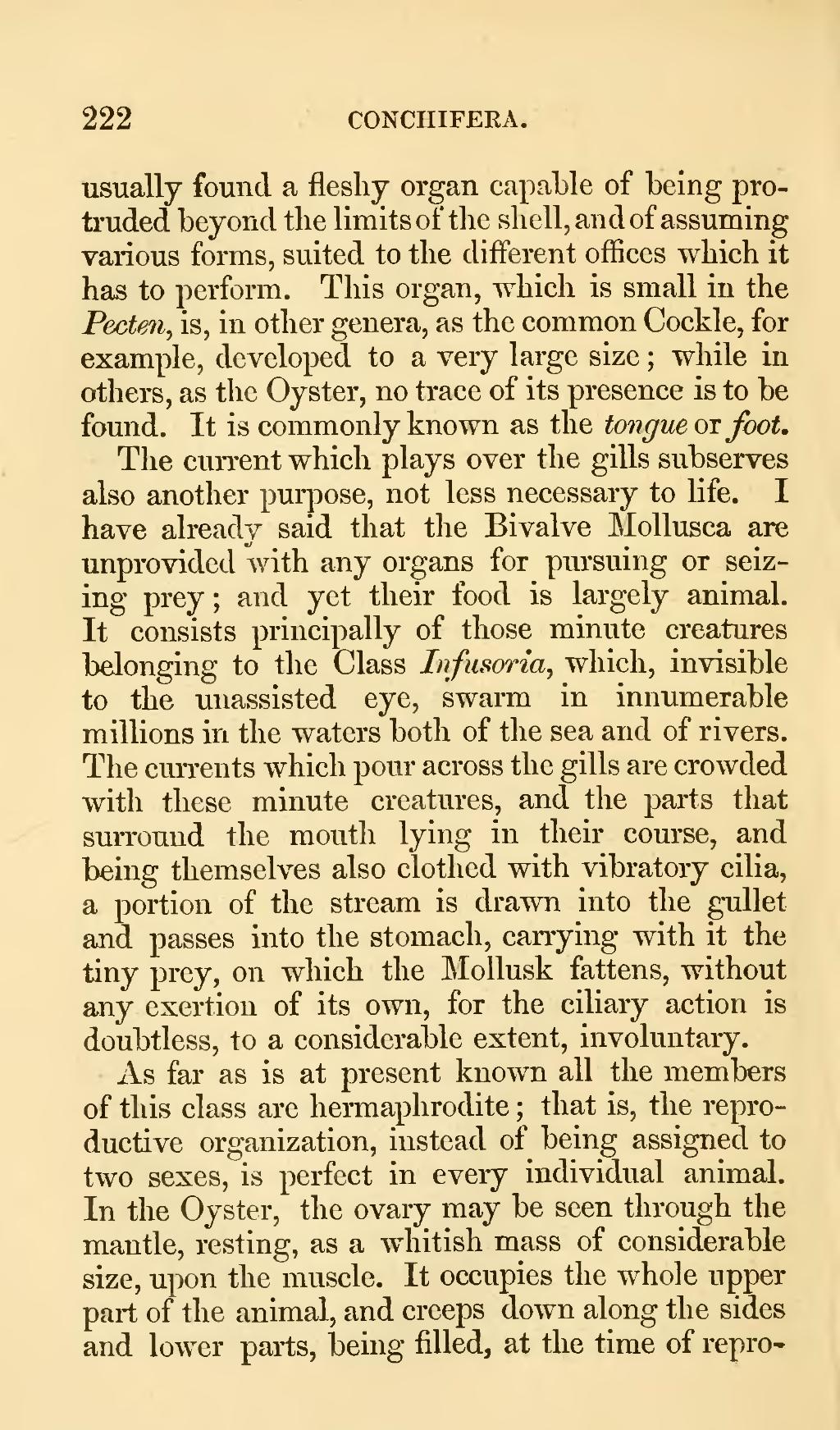usually found a fleshy organ capable of being protruded beyond the limits of the shell, and of assuming various forms, suited to the different offices which it has to perform. This organ, which is small in the Pecten, is, in other genera, as the common Cockle, for example, developed to a very large size; while in others, as the Oyster, no trace of its presence is to be found. It is commonly known as the tongue or foot.
The current which plays over the gills subserves also another purpose, not less necessary to life. I have already said that the Bivalve Mollusca are unprovided with any organs for pursuing or seizing prey; and yet their food is largely animal. It consists principally of those minute creatures belonging to the Class Infusoria which, invisible to the unassisted eye, swarm in innumerable millions in the waters both of the sea and of rivers. The currents which pour across the gills are crowded with these minute creatures, and the parts that surround the mouth lying in their course, and being themselves also clothed with vibratory cilia, a portion of the stream is drawn into the gullet and passes into the stomach, carrying with it the tiny prey, on which the Mollusk fattens, without any exertion of its own, for the ciliary action is doubtless, to a considerable extent, involuntary.
As far as is at present known all the members of this class are hermaphrodite; that is, the reproductive organization, instead of being assigned to two sexes, is perfect in every individual animal. In the Oyster, the ovary may be seen through the mantle, resting, as a whitish mass of considerable size, upon the muscle. It occupies the whole upper part of the animal, and creeps down along the sides and lower parts, being filled, at the time of repro-
